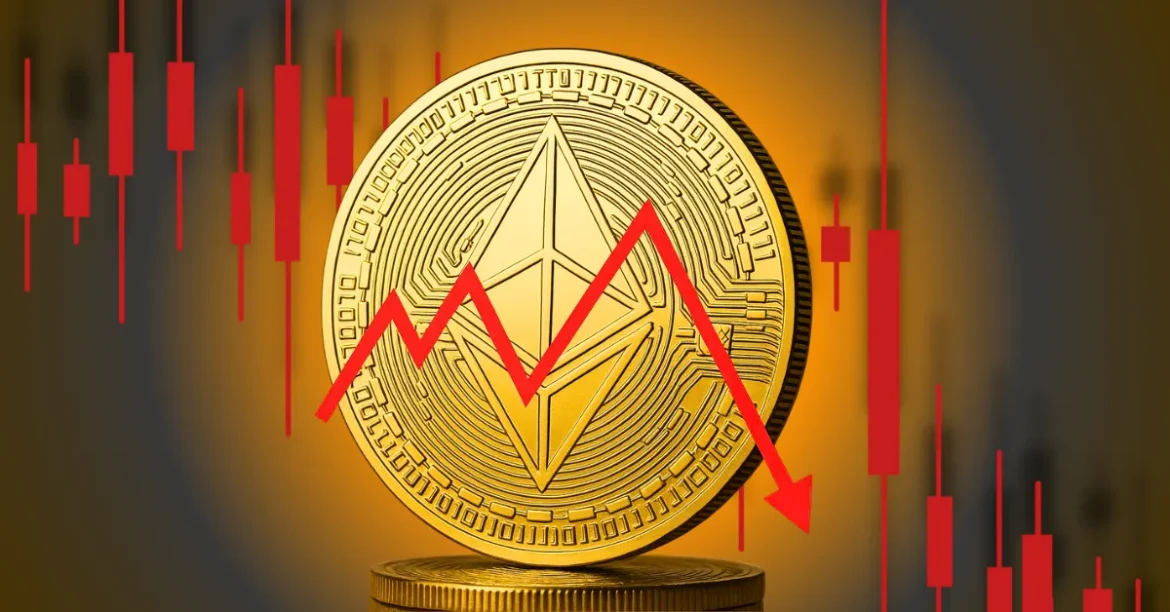The recent transfer of approximately $262 million worth of Ethereum (ETH) — specifically 105,736 ETH — by Ethereum co-founder Jeffrey Wilcke to the Kraken cryptocurrency exchange has ignited widespread speculation and concern within the crypto community regarding a potential large-scale sell-off. Analyzing the situation around this transaction, its historical context, and possible implications provides a clearer understanding of this significant event and its impact on Ethereum’s market dynamics.
Background on Jeffrey Wilcke and His Ethereum Holdings
Jeffrey Wilcke, one of the lesser-known but foundational co-founders of Ethereum, has been involved with the project since its inception. Although not as publicly vocal as other Ethereum founders, his actions regarding his ETH holdings have historically influenced investor sentiment. Since 2016, Wilcke has steadily transferred substantial amounts of ETH to exchanges like Kraken, reportedly moving around 394,000 ETH in total, which represents over half a billion dollars in fiat currency terms across multiple years.
Wilcke’s most recent move emptied nearly all his Ethereum holdings, leaving him with approximately 268 ETH—valued at under $700,000 at current prices. Previous movements by Wilcke included transfers of 20,000 ETH in late 2024, adding to speculation that his recent transfer might signify his gradual exit from holding Ethereum.
Details and Context of the $262 Million ETH Transfer
On May 20, 2025, Wilcke transferred 105,736 ETH, worth approximately $262 million at current market valuations, to a wallet identified by on-chain data and intelligence platforms like Arkham Intelligence as a Kraken deposit address. This sizable movement stands out as one of the largest single Ethereum transactions originating from a co-founder’s wallet in recent history.
The timing coincided with a recent surge in Ethereum prices, pushing the asset near all-time highs above $3,600 per ETH, prompting many market participants to interpret this transfer as a strategic move to liquidate holdings into fiat or other assets.
Interestingly, this transfer has not merely been a deposit to Kraken; subsequent reports indicate that withdrawals were made from Kraken shortly after, suggesting potential redistribution or staged selling activity rather than a simple wallet reorganization.
Market Reactions and Community Speculation
The Ethereum community and broader crypto market reacted swiftly to the news, with conversations on social media platforms such as Reddit’s r/ethtrader and Twitter reflecting anxiety about a possible “whale sell-off.” The term “whale” refers to individuals or entities holding large amounts of cryptocurrency whose transactions can dramatically influence market prices.
Speculation revolves around a few key possible motivations behind Wilcke’s transfer:
– Sell-Off Anticipation: Given the timing and magnitude, many interpret this as Wilcke preparing to sell a substantial portion of his Ethereum holdings in Kraken’s market, which could place downward pressure on the price.
– Portfolio Reorganization: Some analysts and users suggest that the transfer could be a standard wallet restructuring or an institutional move to redistribute assets across different accounts for security or investment diversification.
– Final Exit from Ethereum: Having left Ethereum in 2019 to found a gaming company, Wilcke might be concluding his relationship with ETH holdings, slowly liquidating or reallocating capital accordingly.
Despite these theories, the consistent pattern of bringing vast amounts of ETH to Kraken over years points strongly toward liquidation strategies, especially since the community has observed sell-offs linked to these transfers in past market cycles.
Implications for Ethereum’s Market Sentiment and Price
Large transactions involving ETH by such a high-profile figure naturally impact market psychology. The perceptions fall into these broad consequences:
1. Potential Price Volatility
Heavy sell-offs by whales often trigger price corrections or increased volatility. Traders anticipate that selling pressure from millions of dollars’ worth of ETH hitting order books can create downward movement in price, or at least short-term instability.
2. Investor Caution and Market Sentiment Shift
Investor sentiment is susceptible to the moves of project insiders. Seeing a co-founder shift large volumes of ETH to exchanges encourages caution and possibly triggers stops or pre-emptive sell orders by retail or institutional investors, exacerbating market swings.
3. Highlight on Exchange Liquidity and Depth
Kraken’s capability to handle such a massive deposit—and potential sell-off—is critical in influencing resultant price movement. Markets with deeper liquidity typically absorb large trades with smaller impact, though sudden dumps can still cause temporary disruptions.
Historical Precedents and Wilcke’s Transfer Patterns
Wilcke’s habit of transferring significant amounts of ETH to Kraken is not new. With a total of around 394,000 ETH moved since 2016, summing over $510 million at various price points, Wilcke has periodically capitalized on Ethereum price peaks to liquidate a portion of his holdings.
Past actions show that these moves often precede or coincide with Ethereum price pullbacks, suggesting his transactions may create or signal market top formations. This behavioral trend means traders and analysts keep close watch on his wallet activity as an informal market indicator.
Alternatives to a Sell-Off: Considering Wallet Reorganization Theory
Not all interpretations view Wilcke’s transfer as a sell. Some voices highlight on-chain evidence and commentary noting that such a large deposit could be purely operational—moving funds between cold storage and hot wallets, or redistributing assets among multiple new wallets created for heightened security or tax planning.
This narrative is supported by the observation that multiple newly created wallets subsequently withdrew ETH from Kraken after Wilcke’s deposit, implying internal redistribution rather than outright market liquidation in a single instant.
Conclusion: Navigating the Uncertainty and Market Impact
Jeffrey Wilcke’s transfer of $262 million in ETH to Kraken undeniably raises questions around potential imminent sell-offs, given his historical pattern of large ETH movements and dwindling wallet balance. While the crypto community fears the impact on Ethereum’s price, some argue this might be a sophisticated portfolio management or wallet restructuring strategy.
Investors and observers should maintain vigilance, analyzing market depth on Kraken, subsequent on-chain movements, and price behavior in the days or weeks ahead to discern if a major sell-off unfolds or if this event is part of a broader strategic reallocation.
Above all, this episode underscores the influence insiders and early holders have on crypto markets and the importance of transparent, real-time data analysis to navigate volatile environments effectively. Ethereum remains a major pillar in the blockchain ecosystem, and movements of this scale from figures like Wilcke are significant signals for both opportunity and caution within the crypto community.





